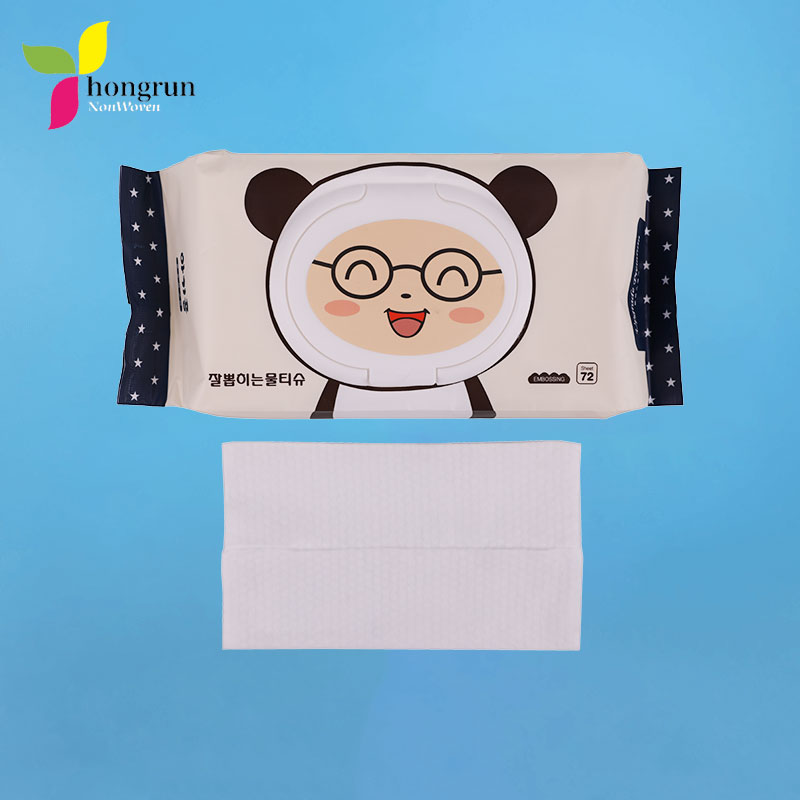HONGRUN
We are a factory and trading company of depilatory wax strip paper and other non-woven fabric products, professional in producing for more than 5 years.
The mechanical properties of textile fibers are called the mechanical properties of textile fibers under the action of various external forces. External forces include various forms such as stretching, compression, bending, torsion, and friction.
The mechanical properties of textile fibers should include fiber strength, elongation, elasticity, abrasion resistance, elastic modulus, etc.
Fiber strength: The fiber strength refers to the ability of the fiber to resist damage from external forces, and it determines the durability of textile products to a large extent. The strength of the fiber can be expressed by the absolute strength of the fiber, which refers to the maximum load that the fiber can bear under the action of continuously increasing load until it breaks. Since fiber strength is related to fiber thickness, the absolute strength of fibers of different thicknesses is incomparable. Therefore, relative strength is often used to express fiber strength. Relative strength refers to the maximum tensile force that a unit linear density fiber can withstand.
Fiber elasticity: Fiber and its products must be subjected to external force during processing and use, and corresponding deformation occurs. When the action of the external force is removed, part of the deformation of the fiber can be recovered, while the other part of the deformation will not recover. According to this characteristic of the fiber, the deformation of the fiber can be divided into three parts, that is, the part of the deformation that can be recovered immediately after the external force is removed is called the rapid elastic deformation; when the external force is removed, the part of the deformation that can be recovered slowly is called the slow Elastic deformation; when the external force is removed, the part of the deformation that cannot be recovered is called plastic deformation.
The elasticity of the fiber refers to the ability of the fiber to recover from deformation. The commonly used index to express the elasticity of the fiber is the elastic recovery rate of the fiber or the rebound rate. It refers to the percentage of rapid elastic deformation and slow elastic deformation for a certain period of time in the total deformation. The elastic recovery rate of the fiber is high, the elasticity of the fiber is good, and the ability of deformation recovery is strong. Textiles made of elastic fibers have good dimensional stability, are not easy to wrinkle during the wearing process, and are more wear-resistant. For example, polyester has excellent elasticity, and the garments made from it have the characteristics of stiffness and wear resistance.
Fiber wear resistance: Fiber and its products are constantly subjected to friction during processing and actual use, causing abrasion. The wear resistance of the fiber refers to the performance of the fiber to withstand external force abrasion.
The abrasion resistance of fibers is closely related to the fastness of textile products. The abrasion resistance is an important indicator of the wearability of clothing fabrics. The wear resistance of the fiber is related to the macromolecular structure, supramolecular structure, elongation at break, elasticity and other factors of the fiber.
The elastic modulus of the fiber: The elastic modulus of the fiber is also called the initial modulus, which refers to the ratio of stress to strain at the beginning of a straight line on the fiber stretch curve. In actual calculations, generally one point on the load-elongation curve when the elongation is 1% can be used to obtain the elastic modulus of the fiber. The size of the fiber elastic modulus indicates the degree of difficulty of the fiber under a small load. It reflects the rigidity of the fiber and is closely related to the performance of the fabric. When other conditions are the same, if the elastic modulus of the fiber is large, the fabric will be stiff; conversely, if the elastic modulus is small, the fabric will be soft.
www.hzhrnonwoven.com

Copyright © 2019 Hangzhou Hongrun nonwovens Co., Ltd. | All Rights Reserved Technical Support:HWAQ Wholesale Depilatory Wax Strips Paper Suppliers